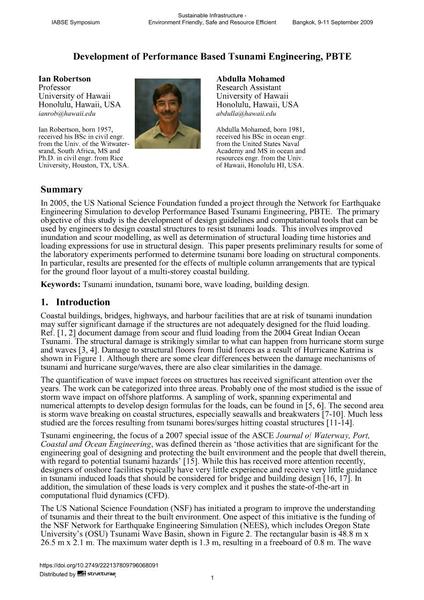Development of Performance Based Tsunami Engineering, PBTE

|
|
|||||||||||
Bibliographic Details
| Author(s): |
Ian Robertson
Abdulla Mohamed |
||||
|---|---|---|---|---|---|
| Medium: | conference paper | ||||
| Language(s): | English | ||||
| Conference: | IABSE Symposium: Sustainable Infrastructure - Environment Friendly, Safe and Resource Efficient, Bangkok, Thailand, 9-11 September 2009 | ||||
| Published in: | IABSE Symposium Bangkok 2009 | ||||
|
|||||
| Page(s): | 16-23 | ||||
| Total no. of pages: | 8 | ||||
| Year: | 2009 | ||||
| DOI: | 10.2749/222137809796068091 | ||||
| Abstract: |
In 2005, the US National Science Foundation funded a project through the Network for Earthquake Engineering Simulation to develop Performance Based Tsunami Engineering, PBTE. The primary objective of this study is the development of design guidelines and computational tools that can be used by engineers to design coastal structures to resist tsunami loads. This involves improved inundation and scour modelling, as well as determination of structural loading time histories and loading expressions for use in structural design. This paper presents preliminary results for some of the laboratory experiments performed to determine tsunami bore loading on structural components. In particular, results are presented for the effects of multiple column arrangements that are typical for the ground floor layout of a multi-storey coastal building. |
||||
| Keywords: |
building design wave loading Tsunami inundation tsunami bore
|
||||
